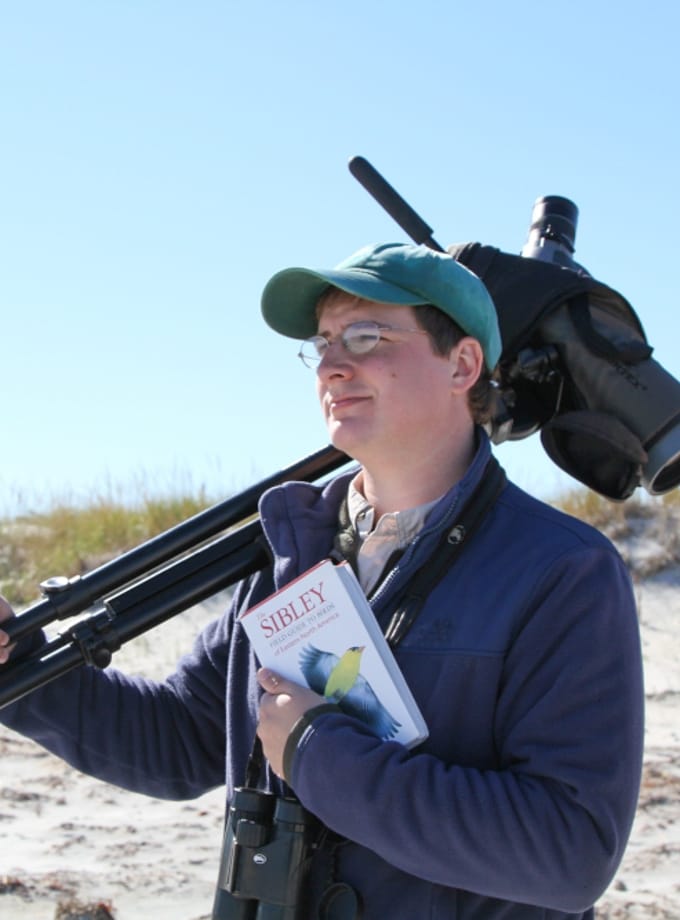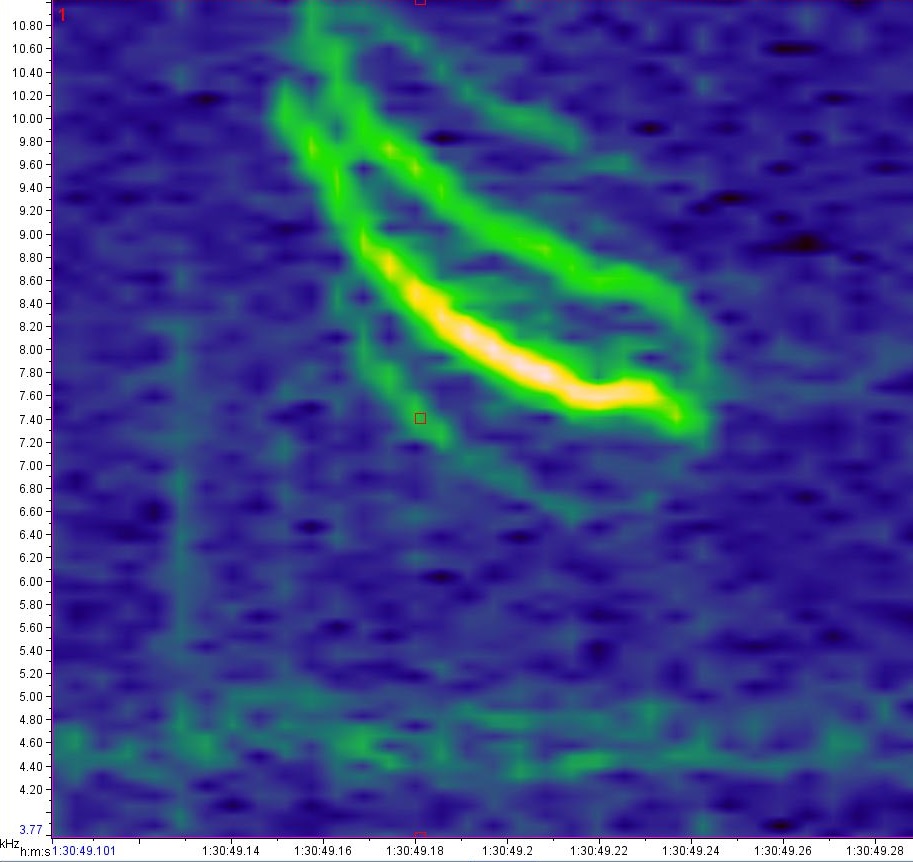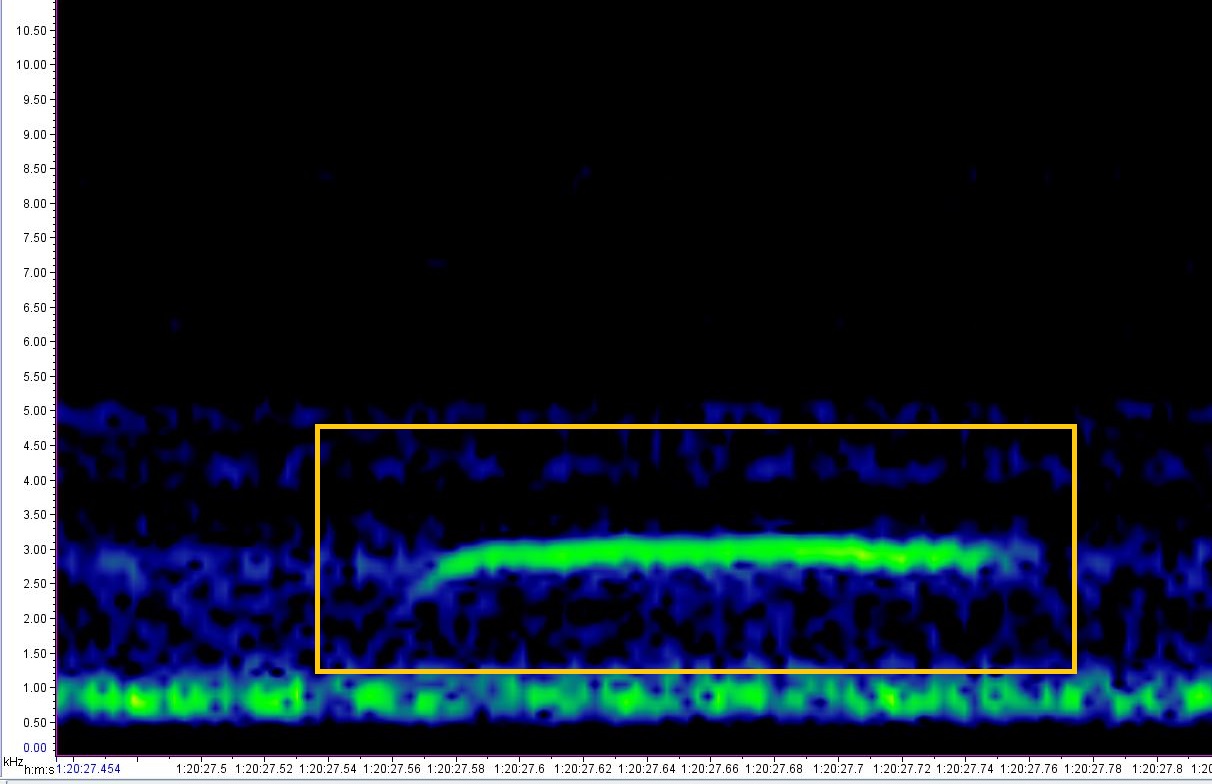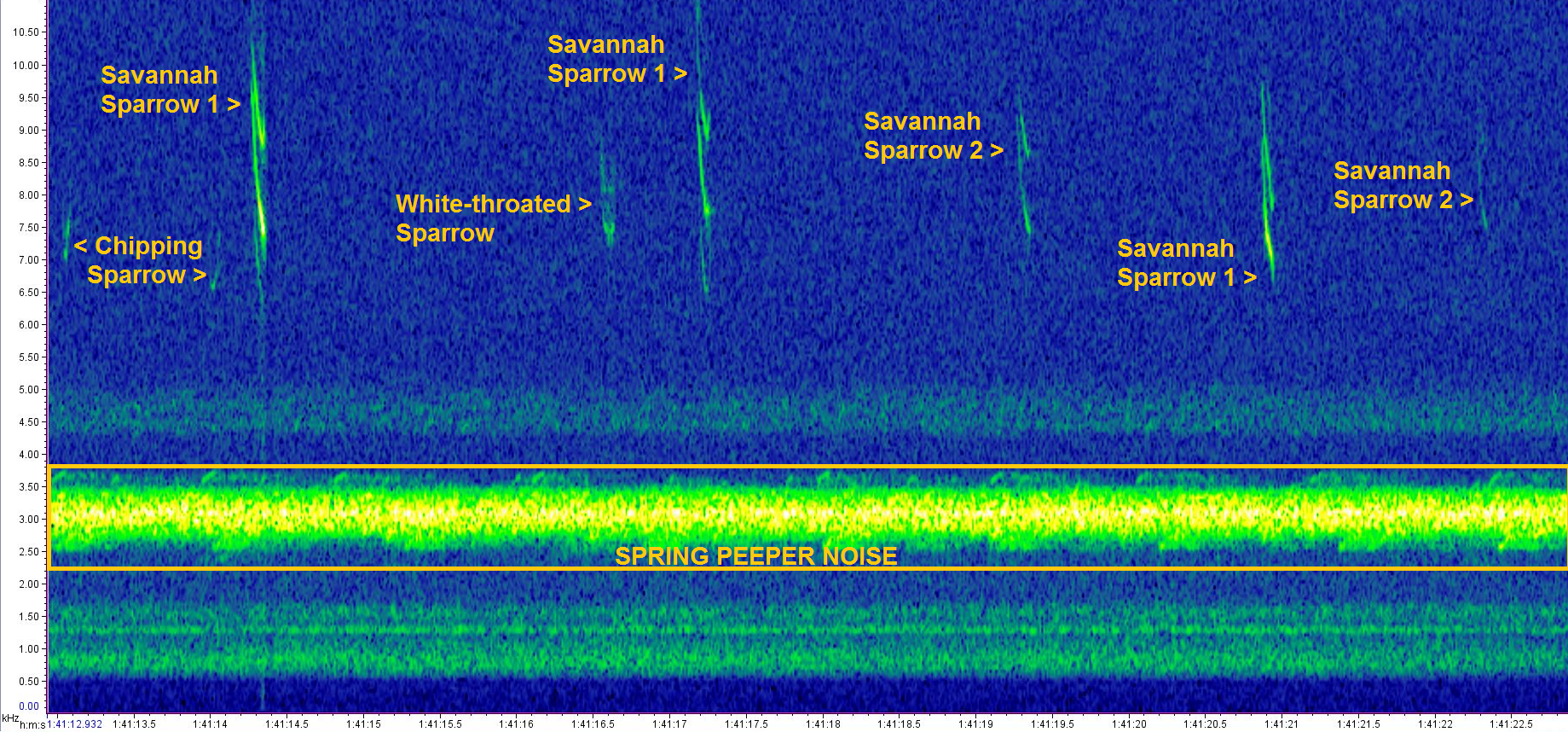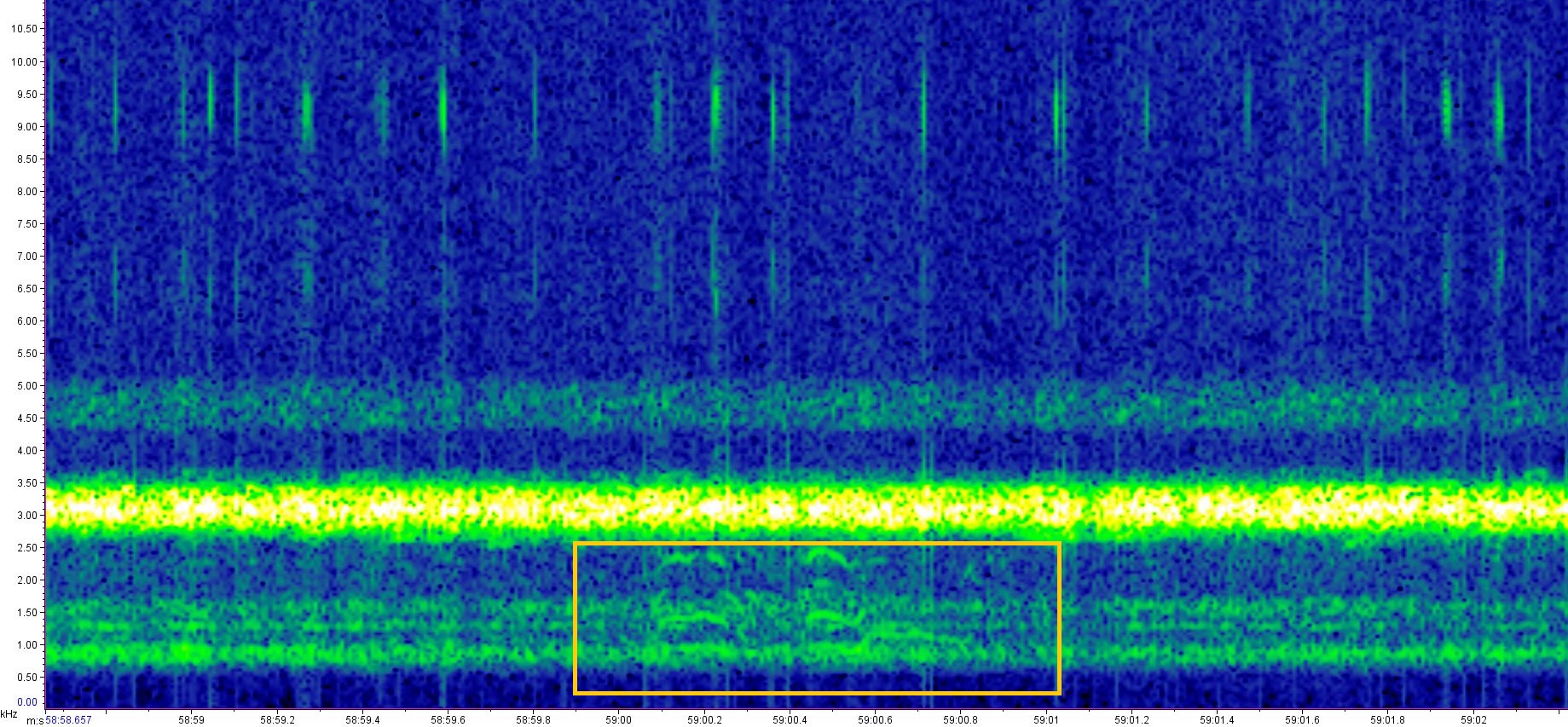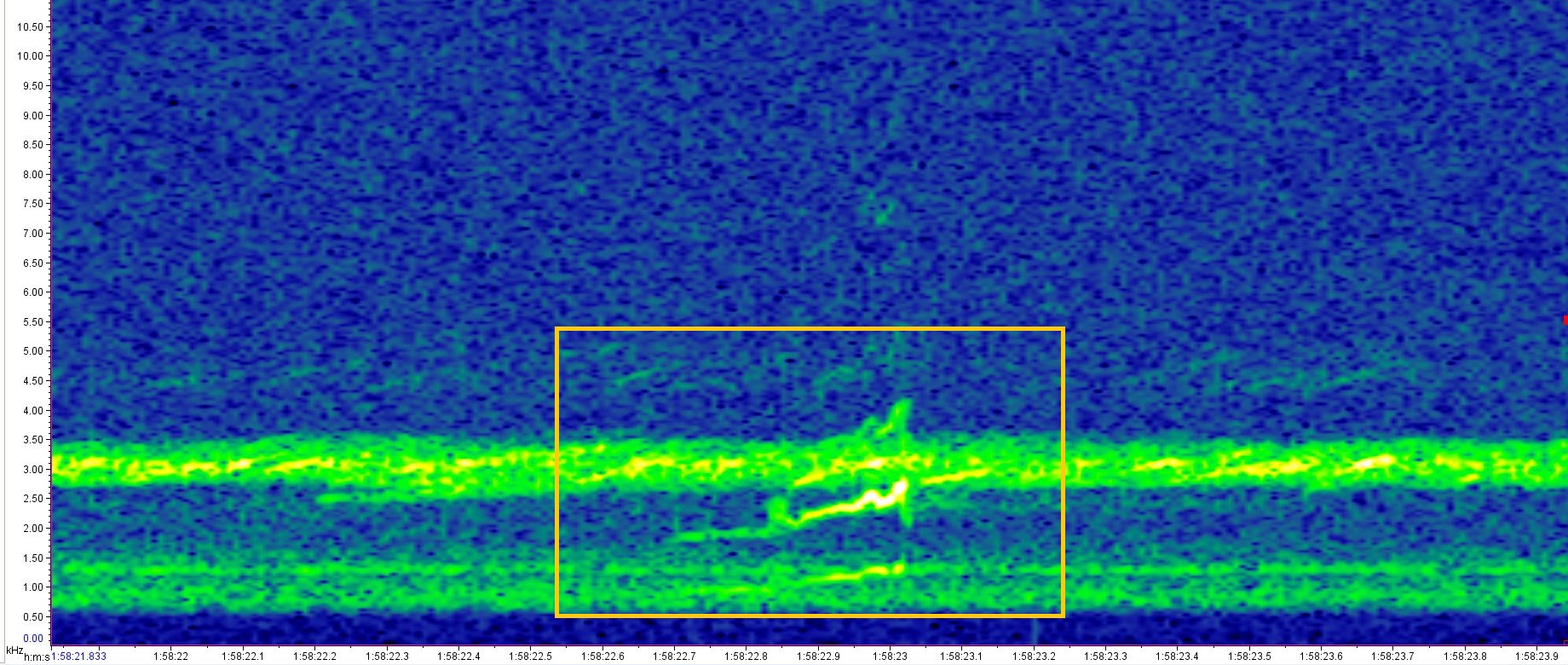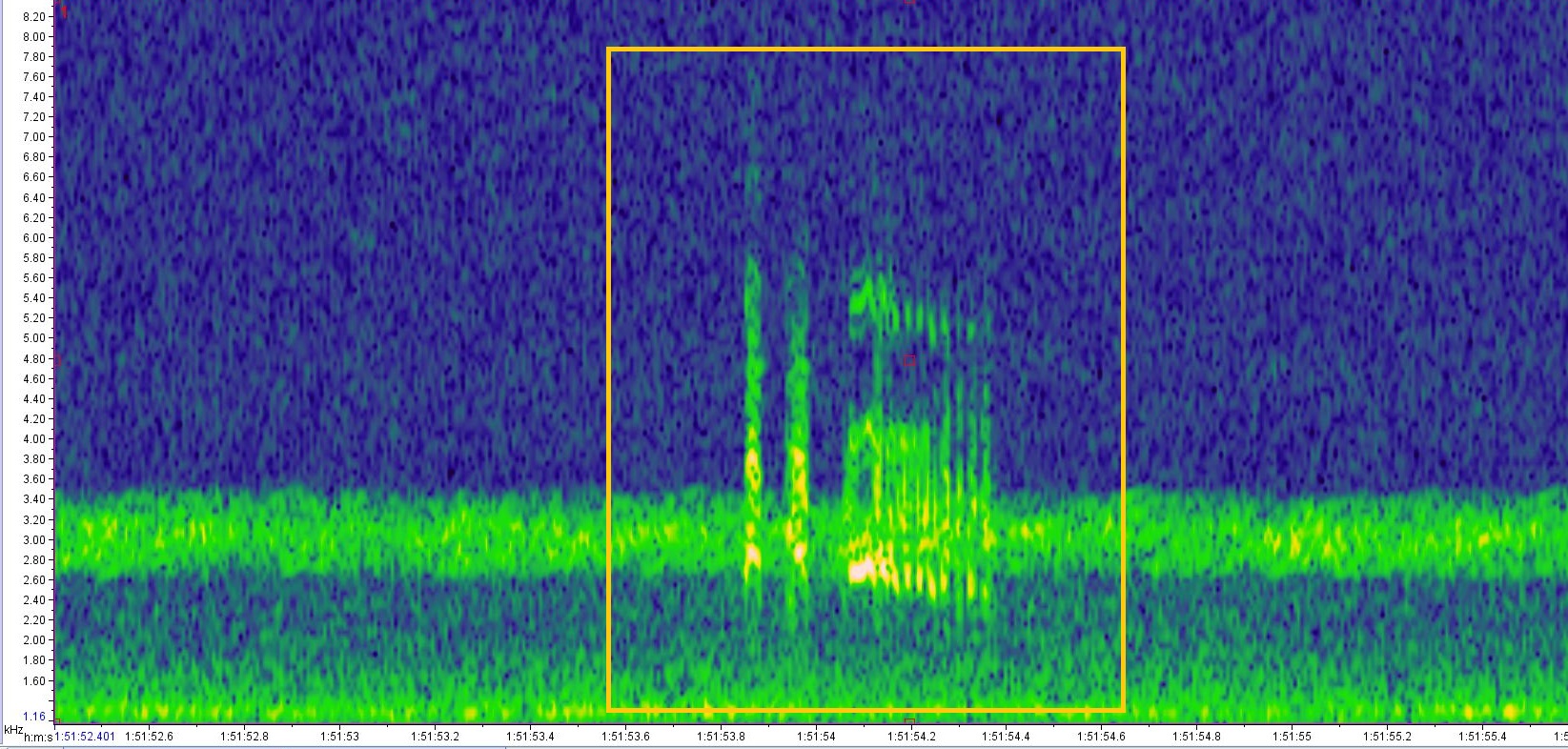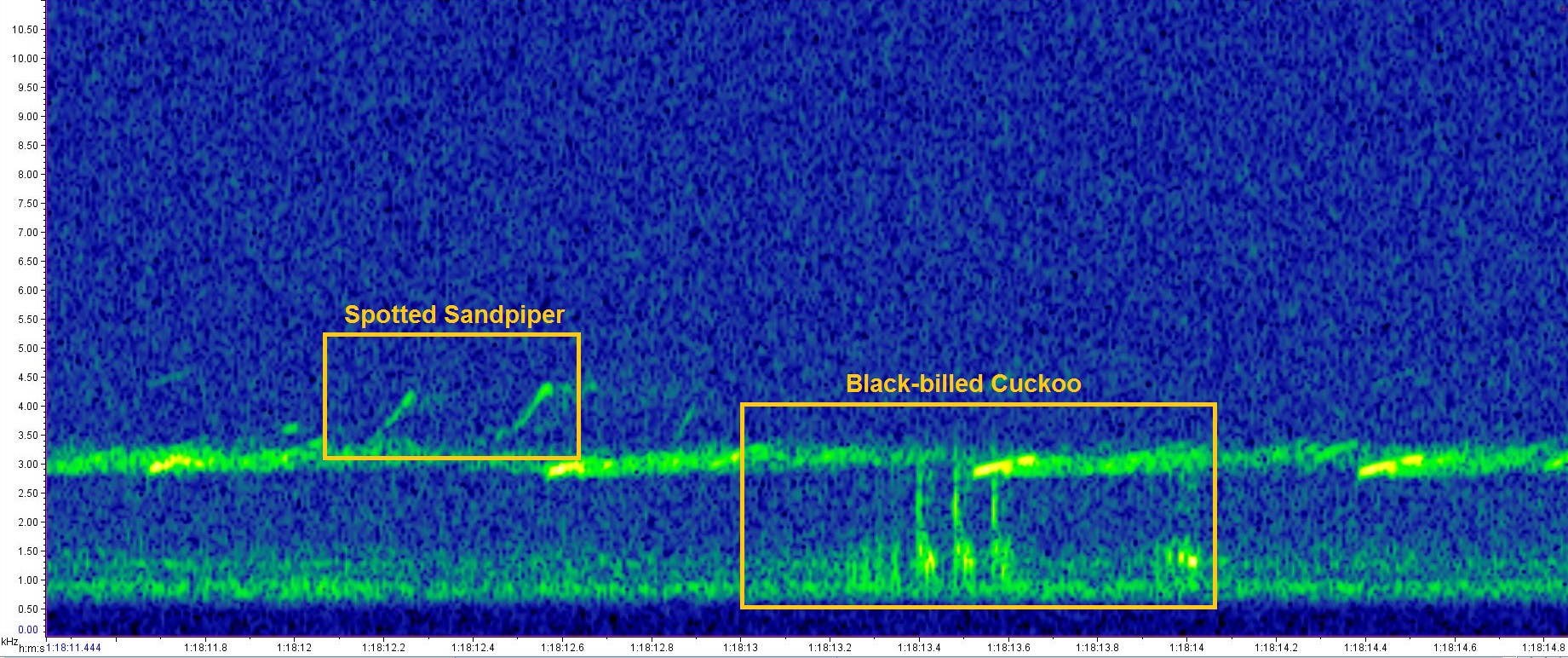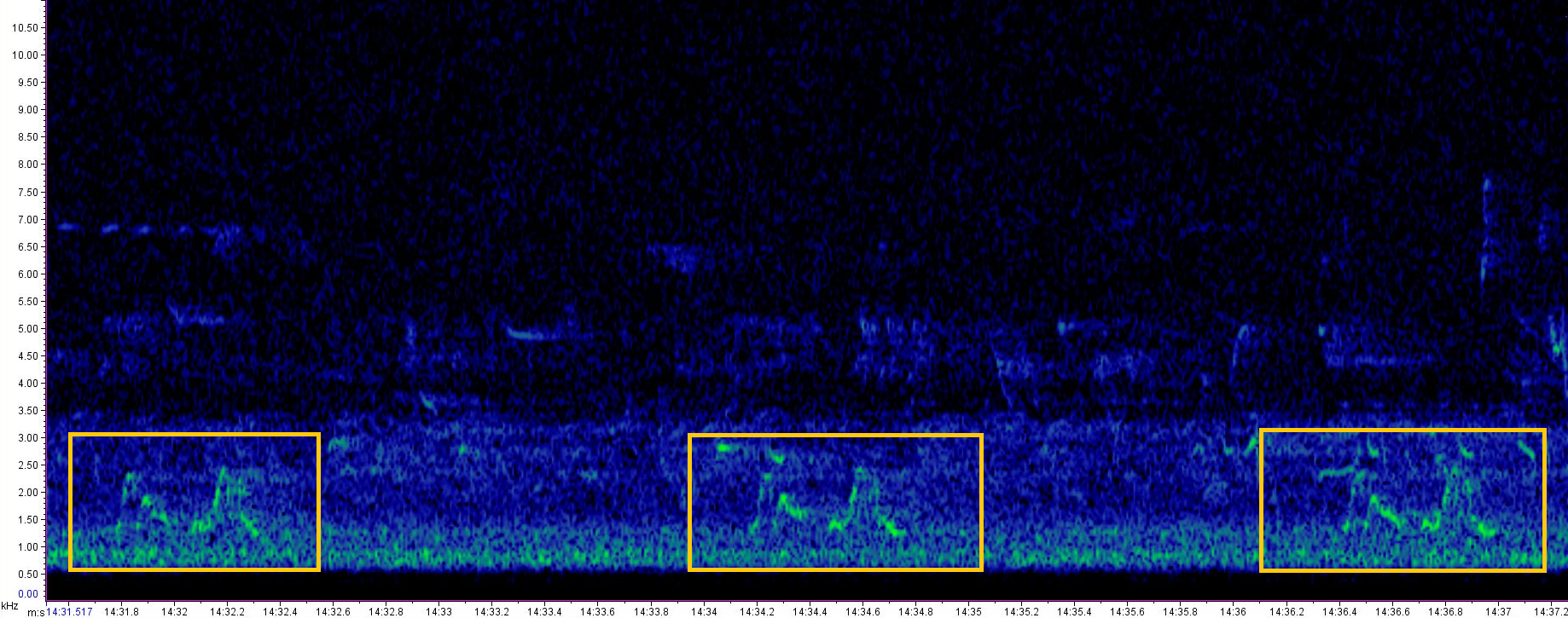What do Virginia Rail, White-throated Sparrow, Yellow-billed Cuckoo, Yellow-rumped Warbler, and Long-tailed Duck all have in common? Attendees of our recent Bird Biology crash course could probably list a number of characteristics that these species share, but one of the most interesting things they all have in common is their presence on an ever growing list of species detected as part of our new nocturnal flight call (NFC) monitoring project here at Manomet HQ.
What are nocturnal flight calls?
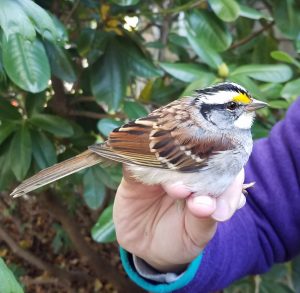
Many of the species that visit Manomet’s Plymouth headquarters property in the spring or fall migration seasons are nocturnal migrants. The reasons why it might be advantageous for a small songbird to migrate in the cover of darkness are numerous. Most predators of birds are diurnal (active during the day), temperatures are lower, and winds are less extreme at night. Experiments have also shown that birds use seasonal patterns of the stars to orient themselves once aloft. Migrating at night also allows birds to refuel during the day; the reason why we are able to capture migrant birds in our nets at Manomet. Migrating at night is still risky business and every bird’s migratory success (as in many other aspects of their lives) can be aided by teamwork. Many species migrate in small flocks and use vocalizations to help stick together. These nocturnal flight calls (NFCs) tend to be short and high-pitched. Human observation of these calls is not new; several early naturalists in Europe and North America remarked about the numbers of birds heard overhead at night. What is new is our ability to efficiently record these calls and our ability to identify many of them thanks to recent work in the field. We now know that most North American warblers, thrushes, and sparrows use NFCs during migration. Even some more rarely encountered migrants like cuckoos, rails, and bitterns can be heard calling overhead at night. Ornithologists, both professional and amateur, have begun setting up NFC monitoring stations (essentially a microphone and a recording device) and some have begun using nightly NFC numbers to help quantify the magnitude of migration.





 Back to all
Back to all
